The MXstore Boots Buying Guide

 When it comes to dirt bike boots, there's an endless amount of options available at varying different price points.
When it comes to dirt bike boots, there's an endless amount of options available at varying different price points.
In this guide, we cover the ins and outs to buying your next set of motocross boots.
Motocross, enduro, trials, pit bike: Which boots are right for me?
Dirt bikes are used in a range of different disciplines and there are different boot designs to suit.
Motocross & Enduro boots: Racing around a motocross track or ripping through enduro trails, your lower legs are under increased load and are susceptible to getting caught and twisted on obstacles or terrain. As ankle injuries are very common in motocross you won’t see many racers hitting the track in a low-end boot. Look for something with extra ankle support - your foot doesn't even touch the ground to endure an ankle fracture. Often times over-jumping or falling short on a jump is all it takes to fracture one or both ankles.
Trail riding boots: Boots for trail riding are the same as motocross and enduro boots, however there are options from a selection of manufacturers who make an 'off-road' version of their MX boot. Some boots sport extra toe protection with re-enforcements around the toe area, while some also offer extra waterproofing for those creek crossings.
Moto trials boots: Look for something with a moulded sole that’s both light and flexible. You’ll be spending a fair bit of time walking the sections so make sure they are comfortable. Alpinestars makes a specific boot for moto trials riders.
Pit bike boots: There are short-cut boots on the market which are essentially a twin buckled, smaller brother of the full-sized items we are used to. But, we always recommend a full-length boot if you can manage it. The longer upper will keep your shins better protected and keep your skin away from that burning exhaust pipe.
Some bikes are simply too small to accommodate a full-length boot in which case a ‘short boot’ is still a better offering than a shoe or work boots.
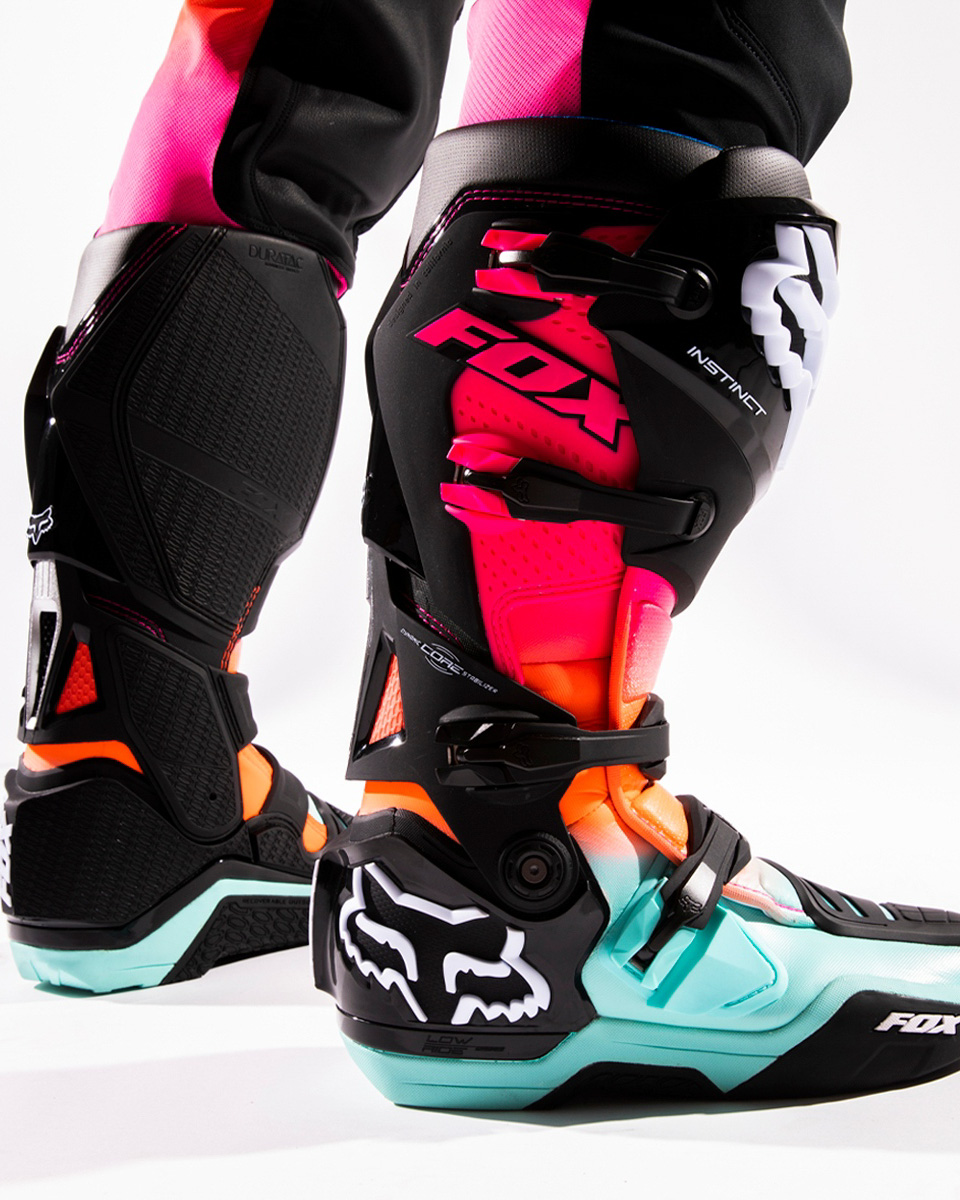
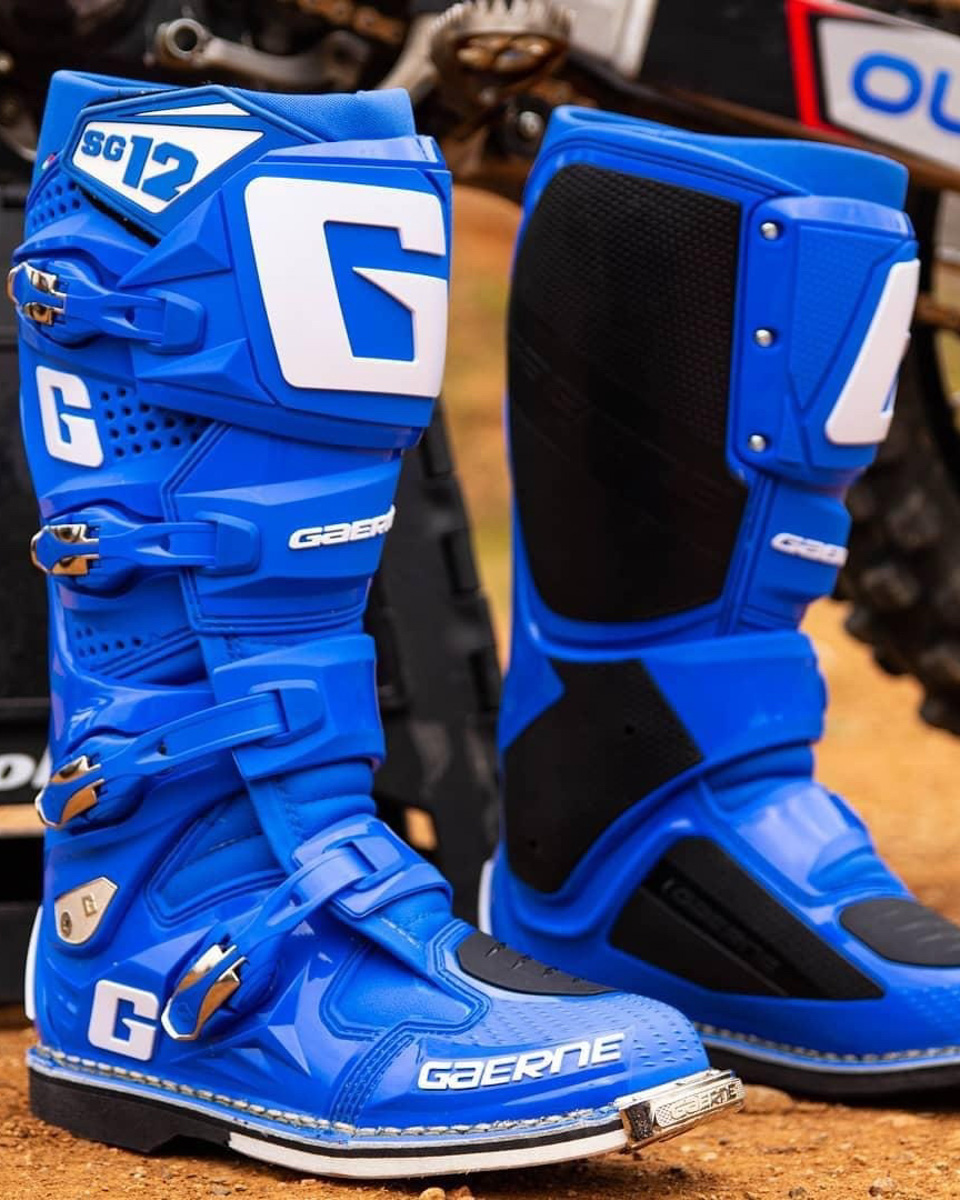
What size dirt bike boots to buy and how should they fit?
Different boot brands are labelled with different sizing. Either US, UK or EUR. Unfortunately, there are no hard and fast rules and as every foot differs in size and shape there is no definitive sizing chart.
Check your shoe sizing: The inside of most shoe tongues are labelled with one or more sizes. It may even be printed on the inner sole or the underside of the shoe. Be sure to take note of the sizing scale (AU, UK or EUR).
Convert if necessary: All boots listed on MXstore are listed with the sizing scale for the appropriate brand - it will provide multiple sizing scales, and for complete accuracy, it will also provide a length measurement.
Choosing a size: We have consistently found it to be more comfortable to buy a pair of boots one size larger than your shoe sizing. Having said that, if you are on the smaller side of your sizing, or even swing between shoe sizes depending on the shoe brand, then always buy a boot that is the size of the largest shoe you wear. For example – if you swing between 9US and 10US, then a 10US boot should fit nicely. If you are always a 10US then an 11US boot might be a more comfortable fit. For the most accuracy, measure your foot from heel to toe, and reference the measurement on our measurement chart for that brand.
How should boots fit? Boots should fit as tight as possible/comfortable. Large boots should be filled with some thick socks and the buckles should be tightened accordingly. Those motocross boot buckles play an extremely important role in providing stability to the ankle joint by helping to prevent excessive lateral movement. To keep your ankle protected they need to be tight. A loose boot is not serving its purpose so please keep those buckles tight.
New motocross boots will stretch so bear that in mind when choosing your size but please note they will only stretch width-wise. They cannot get longer toe-wise. Please don’t think that a slightly short boot will be more comfortable over time - it won’t. As your boots age and the leather stretches your boots will get looser so your boot buckles need to be tightened regularly. If you can easily snap your buckles closed they are not tight enough. The buckles should at least require some force to fold closed and you should feel your boot squeeze your ankle (comfortably of-course). Remember to replace busted buckles ASAP - they are cheap to buy and easily replaced.
Tip: People talk of a ‘break in' period when talking about new motocross boots. This is period of time immediately after purchasing new boots which can be days or weeks in which boots can feel slightly tight and even difficult to ride in until they are ‘worn in.’ Part of the break-in period is simply a matter of your body becoming used to the new boots, while the other part is boot stretch as explained above.
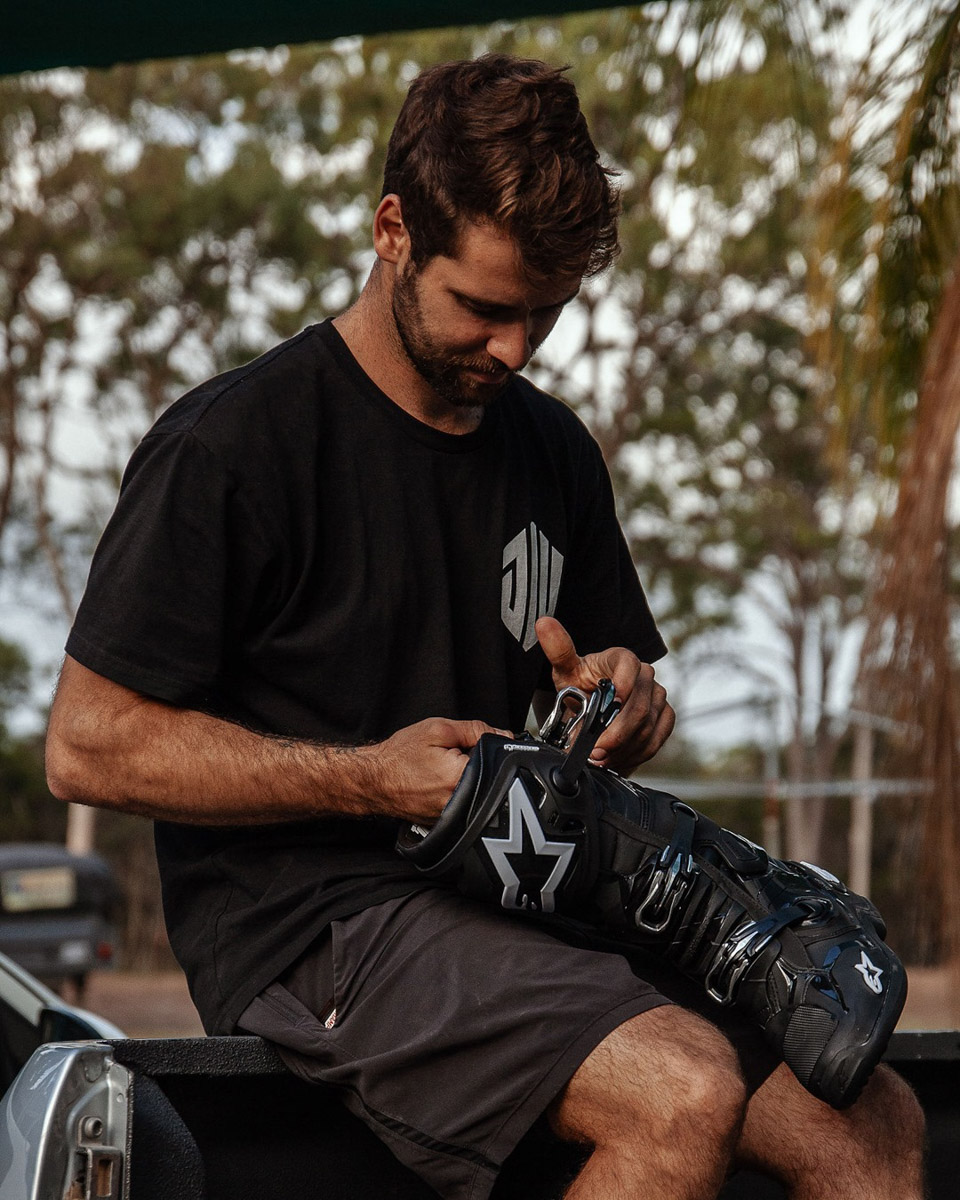
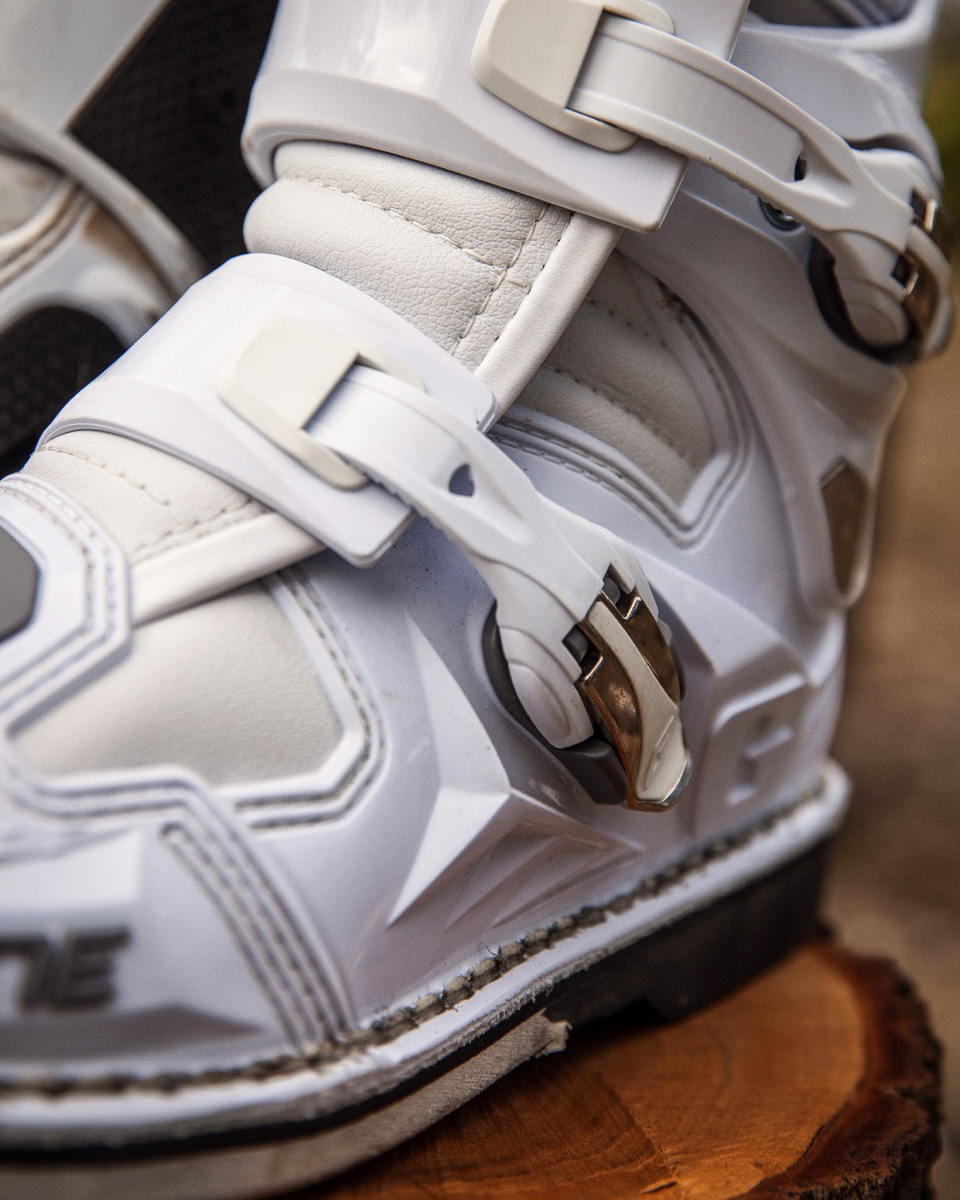
Women's motocross boots & kids motocross boots:
While there are women's specific boots on the market, many girls find men's boots just as comfortable. Women's MX boots are usually labelled with women's sizing and are physically shaped a little different to accommodate for a women's smaller (usually) and thinner foot.
Unfortunately, there is a much smaller range of boots available for women, so unless you are specifically chasing pink or purple colours, we recommend checking out the men's range. You should find a men's boot to be just as comfortable in the long run.
We also have Kids MX riding boots - If you're unable to try the boots on and are worried about how a boot is going to fit then give us a call for some friendly advice. Remember, if you order online and feel the boots just don’t quite fit, we are happy to exchange them providing they comply with our return policy.
Entry-level Vs mid-range Vs top of the line: What's the difference?
With boot prices ranging from the low $100s to up around the $1,000 mark, it’s not hard to feel a little overwhelmed. The secret to choosing a pair of boots is no secret at all - you get what you pay for! It’s the same old story and it’s really that simple. Generally speaking, you pay more for higher quality materials, advanced support and protection systems, and superior overall comfort and feel.
Entry-level - $100-$250: The boots we consider to be on the lower end of the scale (protection wise), tend to lie in this price range. Generally constructed of a lower grade leather, they tend to lack ankle support. They also lack external shielding and can at times look like a long leather shoe. On the plus side, a thinner cut of leather and a lack of ankle stiffness make these boots easy to walk around in and give decent control of the rear brake and gear levers. Some lower-priced boots can suffer a little from a high toe-box (simply the toe section of the boot) which can make it difficult to fit under the gear lever.
Who are they suited to? These boots weren’t designed for beginners. They were designed for people with strict budgets. A beginner rider has the exact same ankles as any experienced rider so why should they protect their feet and ankles any less? If you have the budget for it, at least consider a boot in the mid-range. If it's not viable, see below for help on picking a decent low-end model.
Read our comparison guide on entry-level motocross boots here: Entry-Level Dirt Bike Boot Comparison
.jpeg)
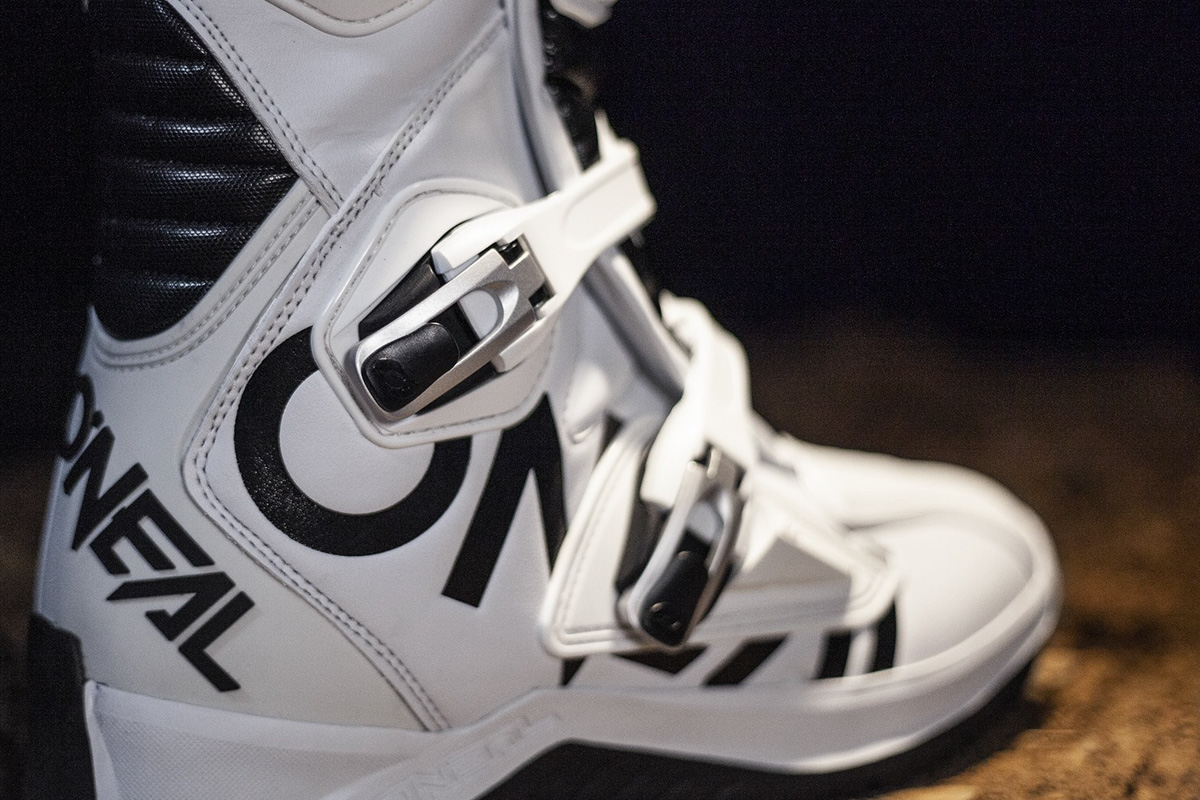
Mid-range - $250-$500: Usually constructed of full-grain leather, mid-range boots are often clad in a heap of plastic shielding, with superior ankle protection. They usually make use of stiff ankle reinforcements to provide ankle stability, but because of this, they can be stiff to ride in. What they make up for in lateral ankle support they lose in ankle extension and flexion movement. While this can slightly hinder gear changes and rear brake control, most riders get used to this very quickly and accommodate by using more of a ‘leg movement’ for gear and brake control, rather than an ‘ankle flex’.
Almost always, mid-range boots are more waterproof than their low-end counterparts, and they also offer much more protection in the toe area which makes them a good starting point for most riders. Some have replaceable soles and all offer a decent range of spares for boot maintenance and increased lifespan.
Who are they suited to? Suited for all riders looking for superior protection without breaking the bank. Every rider from novice to expert should at least consider a boot in the mid-range market.
Read our comparison guide on mid-range motocross boots here: Mid-Level Dirt Bike Boot Comparison
High-end - $500+: Most premium or high-end are constructed of full-grain leather, and some are made entirely of high-tech plastic composites. They offer a higher level of durability and will always outlast their cheaper alternatives. All offer a larger catalogue of replacement parts and are therefore more easily maintained to again increase lifespan. They tend to offer similar intrusion protection as mid-range boots, and much more R&D goes into the production high-end motocross boot and almost all boast the following features:
- Improved comfort.
- Ankle hinge systems that allow increased freedom of movement while also helping to to prevent hyperextension.
- Advanced sole design for increased durability, grip and feeling while still boasting structural rigidity for protection.
- Super-slim toe box design for quicker and easier use of the gear lever.
- Some boots boast inner booties which can greatly increase ankle protection against lateral inversions (rolling the ankle).
- All will boast a mixture of stainless steel and aluminium hardware for weight reduction and corrosion resistance.
- All have replaceable soles.
Who are they suited to? While you won’t catch a professional without a pair, you don’t have to be a ‘racer’ to wear a high-end moto boot. Many beginners who are looking for maximum protection, comfort and durability also use high-end motocross boots. For a look at some of our more premium boot ranges check out the Alpinestars Tech 10 Boots, Fox Instinct Boots and Gaerne Boots.
Read our comparison guide on premium motocross boots here: Premium Dirt Bike Boot Comparison
Learn more about motocross boots:
The Ultimate Guide to Dirt Bike Boots
How To Care and Clean Dirt Bike Boots
Entry-Level Dirt Bike Boot Comparison















Comments (4)